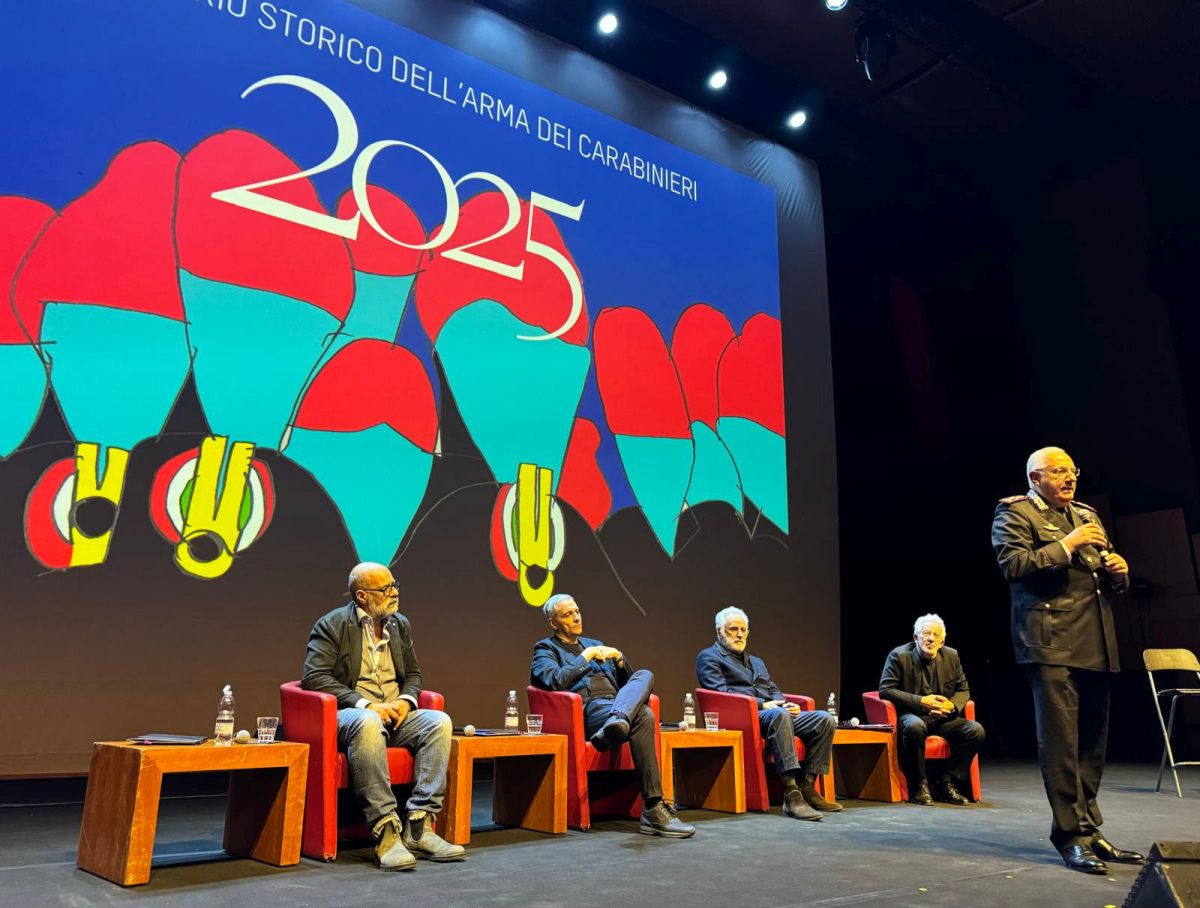ROME (ITALPRESS) – Since 1928 it has chronicled the activities and work of the Carabinieri in Italy and abroad. At the Auditorium Parco della Musica in Rome, the historic calendar of the Carabinieri Corps 2025 was presented.”The Carabinieri and the Young” is the theme chosen for 2025, created with the contribution of famous figures from the Italian artistic-literary scene, Marco Lodola and Maurizio de Giovanni: the former, who edited the graphic design of the work, is considered a multifaceted artist of the New Futurism and Italian Pop Art while the latter, a successful Neapolitan writer, is known for the series of “Il Commissario Ricciardi,” “I Bastardi di Pizzofalcone,” and “Mina Settembre.””For us it is a message that we give to Italians every year, a calendar that is almost 100 years old, 2025 is dedicated to young people, a complicated, fragile generational group, any message of attention to this generational group is a positive message, today parenting is more difficult,” the words of Carabinieri commander general Teo Luzi.”A calendar of which we Carabinieri are proud, every year we donate copy number one to the President of the Republic, whom we thank for the attention he pays to us Carabinieri,” he adds.The texts accompanying the 12 plates describe an epistolary dialogue between a Station Commander Marshal, a widower, and his son, a student grappling with the challenges of everyday life and with the grief, shared with his father, over the disappearance of his mother. The marshal uses some stories from his work as a key to dialogue, talking about some episodes of service that touch on issues such as bullying, addiction, environmental protection and respect for others, inclusiveness and social loneliness.He thus succeeds in overcoming the obstacles and difficulties recurring in the communicative relationship between adults and children with a method that is as cunning as it is discreet: knowing the boy’s habit of flipping through photo albums that also depict his missing mother, he decides to insert notes inside, asking him to remove them if they are read and, therefore, liked.In this way, Maurizio de Giovanni succeeds in romanticizing the relationship between new generations and legality, with a direct and empathetic language, summarizing fatherly love, values and trust in the younger generation in a sort of moral testament.The plates, on the other hand, depict, in Marco Lodola’s unmistakable pop style, carabinieri from the various articulations of the Arma and youthful figures, in the crude version of the “luminous sculptures” that have made him world famous.The calendar aims to enhance young people, an invaluable asset for all and a precious investment for the future of the country, recalling one of the main preventive activities carried out by the Arma on their behalf, the meetings in schools on the “Culture of Legality,” which aspire to promote knowledge of the law and civic culture.A unique and privileged opportunity to be treasured in order to develop in the younger generations sensitivity to the most felt social issues, legality and environmental issues, and to increase awareness of their valuable role in the social, economic and democratic growth of the country.The November table, through the representation of a soldier for each Armed Force, is dedicated to “Defense” and its values. The choice of the month coincides with the anniversary of “National Unity and Armed Forces Day,” which we celebrate on Nov. 4, this year sealed by the ceremony in the city of Venice and the “Defense Village” set up at the Circus Maximus from Nov. 1 to 4, where citizens can discover the Armed Forces. The Historical Calendar of the Armed Forces, has a print run of 1,200,000 copies and translated into eight foreign languages (English, French, Spanish, German, Portuguese, Japanese, Chinese and Arabic) as well as Sardinian and Friulian, a clear demonstration of the esteem and gratitude the Institution enjoys from the community. The high significance of its contents make it an object that is appreciated, coveted and present as much in homes and workplaces as in schools and places of social gathering, as if to testify to the fact that “next to every citizen there is a Carabiniere. “The publication of the Calendar, now in its 92nd edition, after the post-war interruption from 1945 to 1949 was resumed regularly in 1950 and since then has been a timely interpreter, with its plates, of the events of the Force and, through it, of the History of Italy.
– Carabinieri press office photo –
(ITALPRESS).

